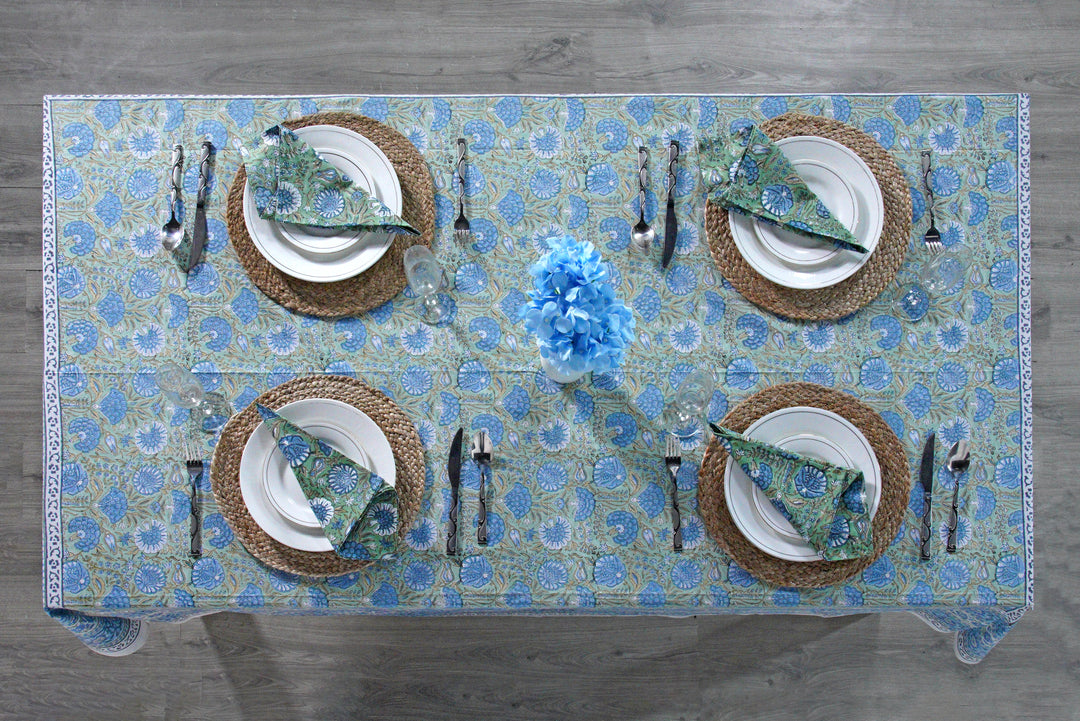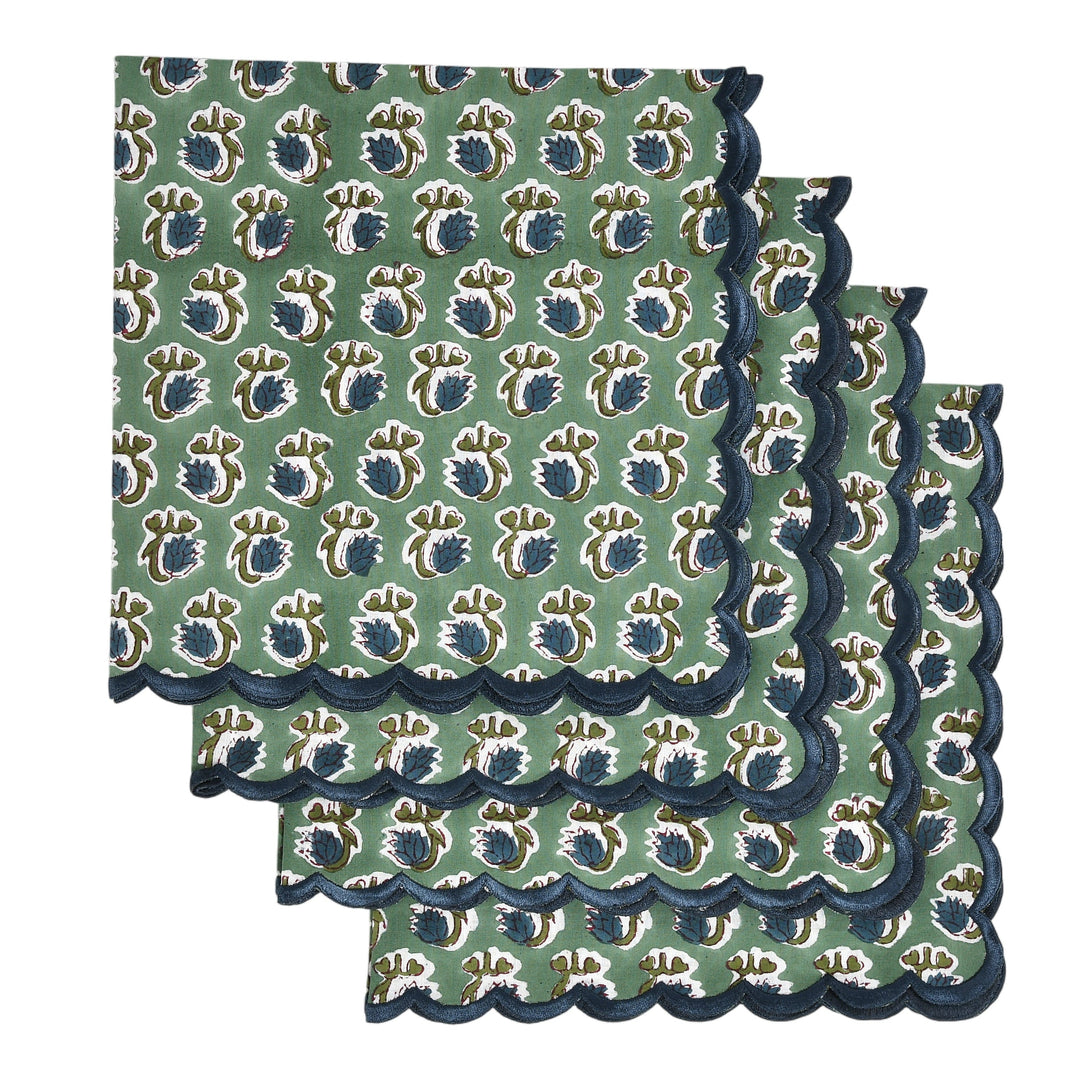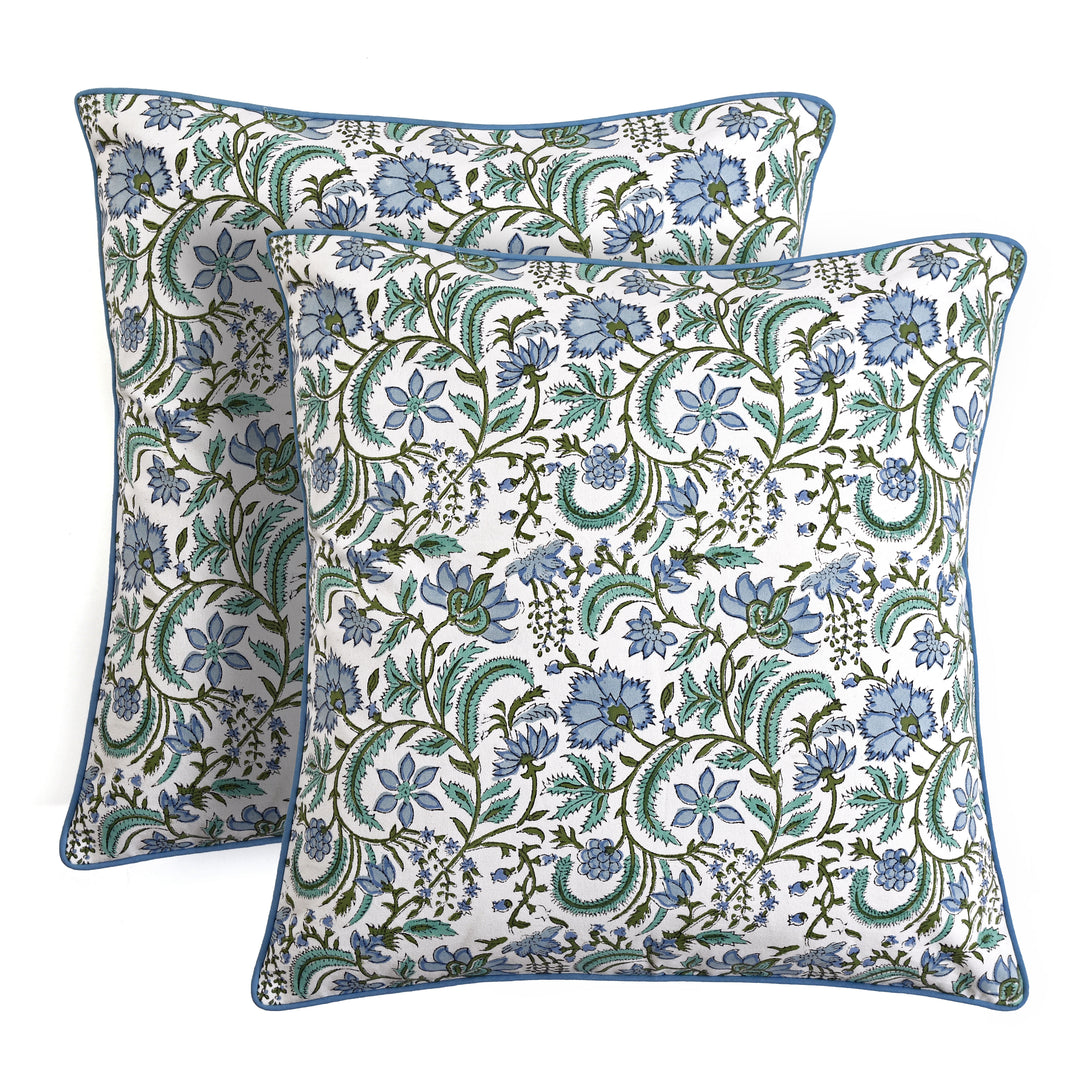Indian Block Printing History

The origins of block printing in India can be traced back to ancient times, with some records suggesting that the technique was already in use around the 4th century. The craft is believed to have developed independently in different regions of the Indian subcontinent, with each region contributing its unique styles and designs.
Block printing flourished during the medieval period in India, particularly during the Mughal era (16th to 18th centuries). The Mughal rulers were great patrons of the arts and played a crucial role in promoting and refining the craft. They introduced new designs, techniques, and motifs, leading to the evolution of block printing as a sophisticated art form.
Indian block printing was not limited to clothing but extended to various other textiles, including bedspreads, tablecloths, and tapestries. The craft gained popularity both within the Indian subcontinent and in international trade. Exquisite block-printed textiles were highly sought after in markets across Asia, the Middle East, and Europe.
Different regions of India developed their distinctive block print traditions, each showcasing unique patterns and designs. Some of the most famous centers for block printing include:
Jaipur (Rajasthan): Known for its bold and vibrant designs, Jaipur is famous for its 'Ajrakh' and 'Bagru' block prints.
Sanganer (Rajasthan): This region is known for its finely detailed designs and the use of traditional techniques.
Kutch (Gujarat): Kutch region produces intricate and heavily embroidered block prints, often combined with other textile techniques.
The process of Indian block printing involves several steps:
Design Creation: Skilled artisans draw the designs that are then transferred to wooden blocks.
Block Carving: The design is carefully carved into wooden blocks, with each color requiring a separate block.

Printing:-

Dyeing and Color Fixation: Natural dyes or eco-friendly chemical dyes are often used. After printing, the fabric is treated to fix the colors.
Indian block printing has survived through generations, with artisans passing down their skills and techniques from one generation to the next. Despite modernization and industrialization, there is still a demand for traditional block-printed textiles, preserving this beautiful and culturally significant art form.







Are you able to send color swatches?
Jennifer
Leave a comment